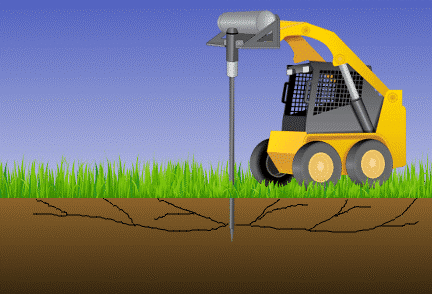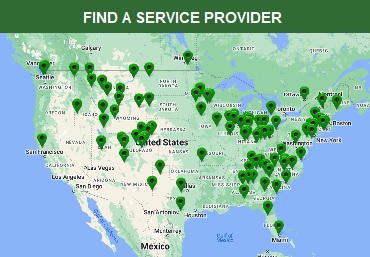
EarthBuster penetrates the ground to the depth that’s right for your system, whatever its type.
Is the EarthBuster environmentally safe?
Yes, we are proud that the EarthBuster only uses air with zero additional toxic chemical or solid additives. Our process can easily be adjusted to implement any and all requests by local environmental regulations fully.
Is the EarthBuster process approved by all state and local health and environment regulators?
Florida and Connecticut specifically list the EarthBuster as an approved method for restoration and maintenance. Most other states do not regulate the absorption area of an Onsite Wastewater Treatment System, commonly called a Septic System. Other states leave it completely up to the local regulation departments. With our soil science engineers, we are always available to answer any questions or concerns, along with testing data upon request, from any health department.
Will this allow the pretreated water from the septic system to enter the groundwater?
No, if groundwater is present it is recommended the tip of the EarthBuster goes no deeper than the bottom of the existing system. (See the 10 July 2023 study that found no air fractures below the depth of the EarthBuster probe tip.) This maintains a safe distance to the groundwater level. When compressed air is released in the ground, fissures are created horizontally and in the direction of least resistance, which is always arching upwards. The formed fissures allow the fluid to move in the preferred direction to rise to roots and evaporate away. A depth control collar can be placed on the probe to assure consistent penetration in the absorption soil. See our Depth Collar video just below.
Does the EarthBuster inject anything foreign to the ground?
Nothing but air is used to break up the biomat and loosen the soil. On occasion, such as in residential yards, we will fill the probe holes with small (pea) gravel. This keeps them from collapsing while still letting them “breathe”–and it also keeps kids from dropping things down the holes.
What should I do if effluent reaches the soil surface?
We recommend washing those areas with water and applying a safe disinfectant like RMR-141 or spread on garden lime. You may want to ask your local health department what they would prefer.
Is it not environmentally better to install a new system?
Not necessarily. With a septic system, the soil in the absorption area becomes contaminated. Unnecessary replacement can contaminate even more soil. If the current system can be kept healthy and working properly for many more years than environmental impact is greatly limited. Often space for a new system is very limited leaving no reasonable options. When the system can be maintained or rejuvenated it benefits everyone.
Will the EarthBuster damage the current system?
The EarthBuster is not the right tool for every system, but with the most common Perforated Pipe with Gravel Bed, Infiltrator, and Sand systems it works well. Great care is taken in locating the lateral lines so that the EarthBuster probe remains in the absorption soil. If the probe does enter the system, damage won’t likely occur. Adjustments can be made on the EarthBuster if concerns of damage do exist such as air pressure and depth.
EarthBuster and all the EarthBuster contractors take the importance of environmental safety very seriously. We aim to rejuvenate septic systems and maintain a healthy environment.


